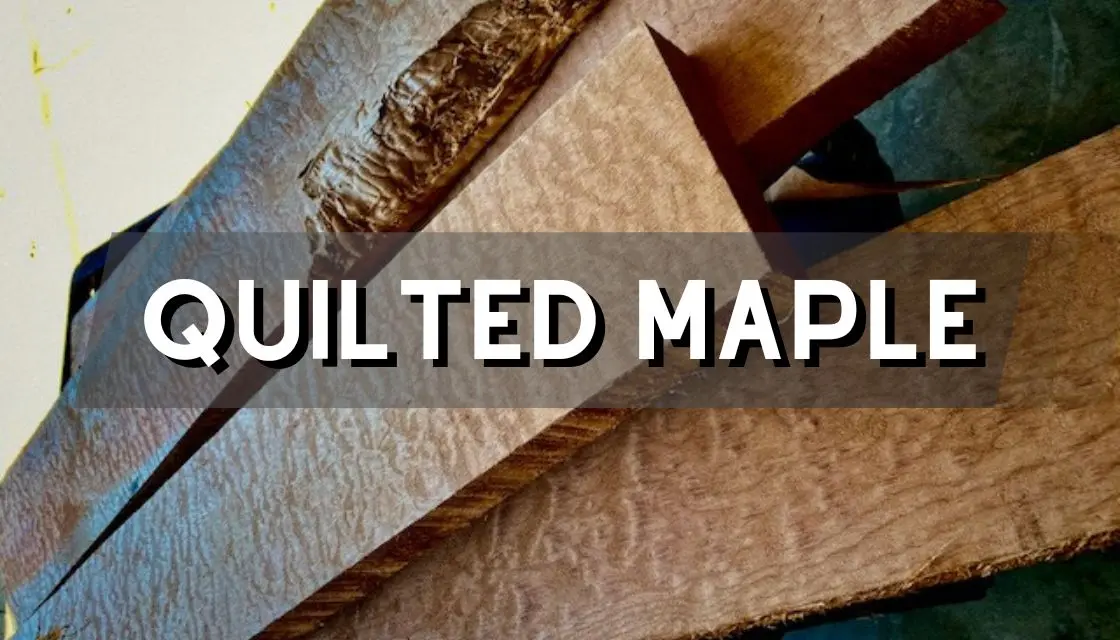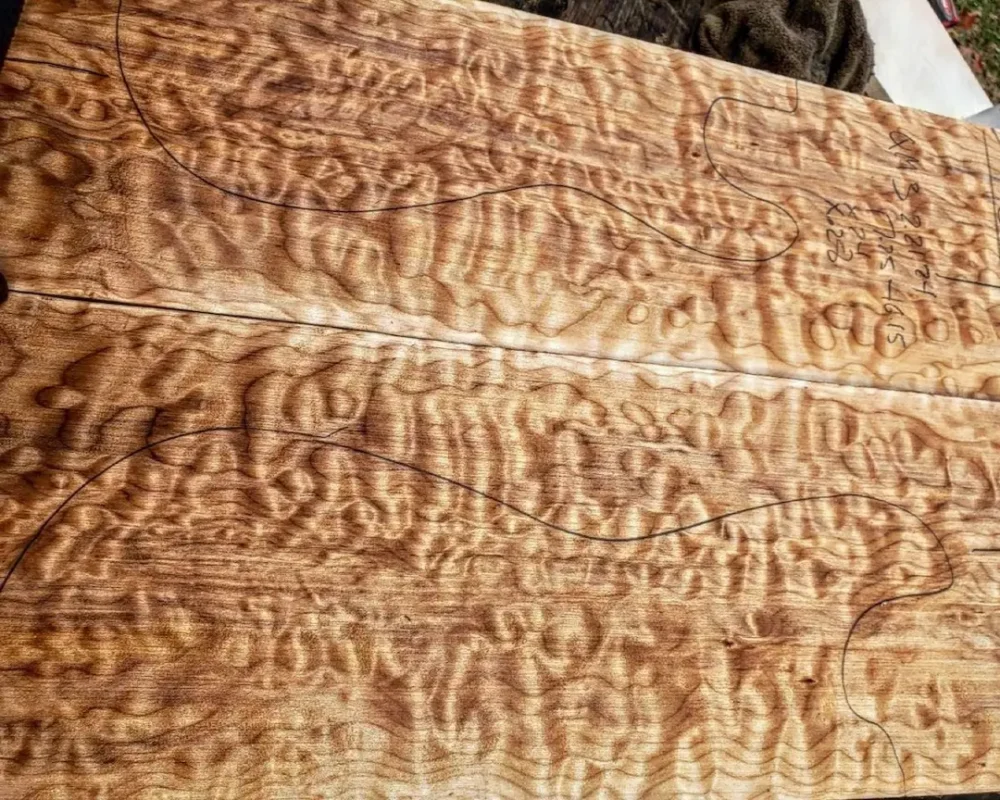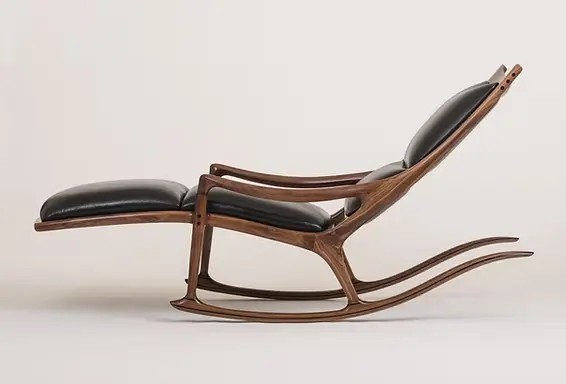
Quilted maple is a term that resonates with woodworkers, musicians, and furniture makers alike. Quilted maple is known for its beautiful look and unique grain patterns. It is a popular material in many industries. This article explores the features, uses, and importance of quilt maple. It gives a clear understanding of this unique wood.
Table of Contents
What is Quilted Maple?
Quilted maple is a rare and highly sought-after type of figured wood that comes from certain maple trees. Its distinguishing feature is a unique, wavy, or rippled grain pattern that resembles the texture of a quilt. This pattern is natural. It forms because of irregularities in how the tree grows. These irregularities are often influenced by genetics, environmental stress, or how the tree responds to its surroundings.
Characteristics of Quilted Maple
– Visual Appeal: The most striking feature of quilted maple is its three-dimensional, wavy grain pattern. This pattern can change in intensity and size. It creates a unique visual effect that shifts with the light’s angle.
– Color: Typically, quilt maple has a light, creamy color, but it can also exhibit shades of pink, brown, or even a golden hue.
– Texture: The wood is generally smooth and fine-grained, making it ideal for finishing and polishing.
The Science Behind the Quilted Pattern
The quilted pattern in maple wood is a result of genetic and environmental factors. While the exact cause is not fully understood, it is believed that the pattern forms due to irregular growth patterns in the tree. These irregularities cause the wood fibers to compress and expand, creating a characteristic quilted appearance.
Factors Influencing Quilted Patterns
– Genetics: Some trees are genetically predisposed to develop figured patterns, including quilting.
– Environmental Condition: Factors such as soil quality, climate, and tree health can influence the development of quilted patterns.
– Tree Age: Older trees are more likely to exhibit pronounced quilted patterns due to prolonged exposure to environmental factors.
Applications of Quilt Maple
Quilted maple is prized for its aesthetic qualities and is used in a variety of applications, from musical instruments to high-end furniture.

Musical Instruments
One of the most common uses of quilted maple is in making musical instruments, especially guitars and violins. The wood’s unique appearance and tonal qualities make it a favorite among luthiers.
– Guitars: Many high-end electric and acoustic guitars feature quilt maple tops. The wood makes the instrument look good and helps its sound. It offers a bright and clear tone.
– Violins: Quilt maple is often used for the back and sides of violins, providing both aesthetic beauty and acoustic excellence.
Furniture and Cabinetry
Quilt maple is also a popular choice for custom furniture and cabinetry. Its striking appearance makes it ideal for creating statement pieces that stand out in any setting.
– Tables and Desks: The unique grain patterns of quilt maple make it a popular choice for tabletops and desks, where the wood’s beauty can be fully appreciated.
– Cabinetry: High-end cabinetry often features quilt maple veneers, adding a touch of luxury and sophistication to kitchens and bathrooms.
Decorative Veneers
In addition to solid wood applications, quilted maple is frequently used as a veneer. This allows for the wood’s beauty to be showcased in a more cost-effective manner, making it accessible for a wider range of projects.
Case Studies: Quilted Maple in Action
PRS Guitars
Paul Reed Smith (PRS) Guitars is renowned for its use of quilted maple in its high-end instruments. The company’s Private Stock line often features stunning quilted maple tops, showcasing the wood’s natural beauty. PRS Guitars is known for its quality and craftsmanship. This is partly because they use premium materials like quilt maple.
Custom Furniture by Sam Maloof

Sam Maloof, a legendary American woodworker, frequently incorporated quilt maple into his custom furniture designs. His rocking chairs, in particular, are celebrated for their elegant lines and use of figured woods, including quilt maple. Maloof’s work demonstrates the versatility and beauty of quilt maple in fine woodworking.
The Market for Quilted Maple
The demand for quilted maple has led to a thriving market, with prices reflecting the wood’s rarity and desirability. High-quality quilt maple can command premium prices, particularly for pieces with exceptional figures and color.
Pricing and Availability
– Rarity: Quilted maple is relatively rare compared to other types of figured wood, contributing to its higher cost.
-Quality Grades: The price of quilt maple varies based on the intensity and uniformity of the quilted pattern. Higher grades with more pronounced patterns are more expensive.
-Sustainability: As with all natural resources, sustainable harvesting practices are essential to ensure the long-term availability of quilted maple.
Conclusion
Quilted maple is a remarkable wood that captivates with its unique beauty and versatility. From musical instruments to fine furniture, its applications are as varied as they are stunning. The wood has a unique quilted pattern. Its colors and ease of use make it popular with artisans and craftsmen.
In summary, quilt maple is more than a material. It shows the beauty and complexity of nature. Its allure lies not only in its visual appeal but also in the stories it tells through its intricate patterns. As more people want this special wood, we must balance appreciation with sustainable practices. This way, future generations can enjoy quilted maple too.
FAQs
How is quilted maple made?
Quilted maple is not “made” like other materials. It is a natural occurrence in some maple trees. The quilted pattern happens because of uneven grain patterns in the wood. This can be due to environmental factors or genetic changes in the tree. Once discovered, the wood is carefully cut and prepared to preserve its unique figure.
How to make a maple leaf quilt block?
To create a maple leaf quilt block, you’ll need fabric in different colors to represent the leaf and the background. The process involves cutting fabric into shapes like squares, rectangles, and triangles. Then, sew them together in a specific pattern. Detailed tutorials and templates are widely available to guide you through the process.
What causes quilted maple?
Quilted maple occurs due to natural irregularities in the tree’s growth, such as stress or genetic factors. These conditions create a three-dimensional, wavy pattern in the wood grain that gives the quilted appearance.
What is quilted maple?
Quilted maple is a type of figured wood found in some maple trees. Its distinct pattern resembles waves or ripples, often described as “quilted.” It is highly sought after for its beauty and is commonly used in woodworking, musical instruments, and fine furniture.
Where to buy quilted maple?
Quilted maple can be purchased from specialty lumber suppliers, woodworking stores, or online retailers. Many sellers offer individual pieces or bulk orders, often categorized by grade and size to suit specific projects.


